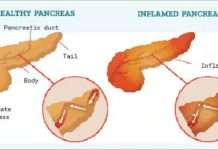In many different diet plans, bread comes under a lot of flak. While it forms the backbone (or the bread and butter) of a modern diet, it has recently been blamed for many common ailments and vilified several times over. Dieters promoting ‘low carb’ lifestyles point to bread as one of the major sources of sugar and insulin spikes in our diet, while some people believe that a gluten-free-diet could benefit people even if they don’t have Celiac disease.
The question is: is bread as bad as everyone says it is? And should you cut it out entirely?
Stop the gluten-free diets!
The first point that we should address here is the idea that non-Celiacs could benefit from a gluten-free diet. This is an idea that has been perpetuated by gluten-free food manufacturers, certain bloggers and hypochondriacs. People are constantly looking for a ‘quick fix’ to their health and the idea that cutting out bread or another item could result in increased energy levels and accelerated weight loss is highly seductive. Ultimately, through various different processes, a gluten intolerance has become almost ‘trendy’.
In reality, Celiac disease only affects around 1% of the population and is a result of gluten causing atrophied ‘villi’ – the ‘fingers’ of the intestines that cling onto food and absorb nutrients. This is a serious condition that results in malnutrition, headaches, cramping, diarrhoea and other symptoms – you would know if you had it. For everyone else, gluten has not been shown to have any effect on the villi and so will not cause health problems.
There is such thing as gluten sensitivity that can exist independently of Celiac disease but this too is rare and as the symptoms are very similar you would again be aware if you did genuinely have the condition. And anyway, research is emerging that suggests that even genuine gluten sensitivity might not be caused by gluten at all, but rather something called FODMAPs (1).
Wheat belly
One of the biggest key players in this mass exodus away from bread and gluten is William Davis and his book ‘Wheat Belly’. In this text, Davis levelled many accusations against bread claiming that a ‘genetically modified protein’ called gliadin, found in bread, would act as an appetite stimulant through opioid effects. Davis claims that this effect is so potent, that it is single-handedly responsible for the consumption of up to 440 (very specific there) extra calories per day. Davis then went on to accuse starch found in wheat of having a unique structure that gives it an incredibly high GI – meaning that the sugar would reach the bloodstream quicker than for other carbs, increasing the insulin spike and thus leading to extra weight gain.
That would all be pretty damning for bread were it true, but fortunately for sandwich lovers it’s not really founded in science. For starters, there is no evidence of genetically modified wheat ever being grown or marketed commercially and gliadin is actually present in all lines of grain. In fact, ancient strands of grains and seeds actually contained more gliadin than bread today. Meanwhile, studies showing gliadins to act like opiates were only ever carried out on rats in relatively much higher doses than would ever be consumed by people. Furthermore, research suggests that the human intestine cannot absorb gliadorphin (the full term), meaning that it wouldn’t have the same effect on humans even if we ate tons of bread.
And is the starch in bread any different? The answer, as you probably had already guessed, is no. In fact there are only two types of starches that come from plant tissue (known as amylose and amylopectin) and wheat contains the exact same ratio of these two starches as most other starchy foods. And actually, bread has a lower GI than potatoes or rice.
Bread is nutritious
It’s also important to note that bread is nutritious in a number of ways. Not only is bread a great source of fibre which can improve blood pressure and circulation but it also contains a number of minerals, thanks to the seeds and other things that often get added. This is particularly true if you eat whole grain bread (which is different from whole wheat), which contains the germ, endosperm and bran.
Losing bread for weight loss
But despite all this, there is still an argument to be made for cutting bread out of the diet, or at least cutting it down if you want to lose weight.
Why is that? Because bread is still a relatively simple carb and it’s still something we eat in great abundance. The average person might eat anywhere from four to eight slices of bread a day if they have toast for breakfast and sandwiches for lunch and that’s a lot of carbs to be eating regularly.
Thus, cutting down on bread is actually just one of the easiest and most practical ways to cut back on both carbs and calories in general. Each slice of bread contains around 60 calories, so cutting 4-8 slices out of your diet could save you 240-480 calories.
If you swapped your morning toast for a bowl of oatmeal and your afternoon sandwich for a salad, you would probably see your waist slim pretty rapidly even without making any extra changes. Then there are also the other things that we usually eat with bread, which include the likes of burgers and hot dogs – cutting those out of your diet could certainly improve your health.
So, should you stop eating bread?
So taking everything into account, should you stop eating bread? The answer is going to depend on how badly you want to lose weight and on your own personal beliefs and feelings towards bread.
But rather than stopping eating bread entirely, there are alternatives. One would simply be to eat less bread: replacing your breakfast toast with oatmeal could be enough to see some health benefits right away for instance but wouldn’t prevent you from enjoying that delicious lunch time baguette – or the very occasional burger.
Likewise, you can enjoy bread more guilt-free if you seek out the right type. Whole grain bread is not only more nutritious, but is also lower GI thanks to the high fibre content. If you want to go really low GI, then you could look for something like rye bread which also sits more heavily on the stomach to keep you fuller for longer.
Finally, toasting frozen bread may also help to make it lower GI (2). Remember, variety is the spice of life. You might be eating a bit too much bread at the moment and that could be contributing to weight gain. But that’s no reason to overreact by completely removing bread from your diet.













